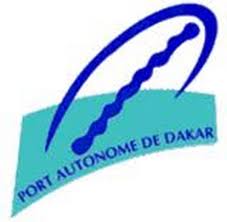dakar port senegal
Dakar Port Senegal
 From a former commercial industrial and public status, the Port of Dakar Authority is since July 1st 1987, a national company with a private management system. Its social capital went from 5 billions to 20 billions CFA, after an increase of the capital authorized by the Board of Directors in 2005. The new status enabled the Port to be dotted with an organisation chart, integrating all the essential functions, necessary to the management of a modern port.
From a former commercial industrial and public status, the Port of Dakar Authority is since July 1st 1987, a national company with a private management system. Its social capital went from 5 billions to 20 billions CFA, after an increase of the capital authorized by the Board of Directors in 2005. The new status enabled the Port to be dotted with an organisation chart, integrating all the essential functions, necessary to the management of a modern port.
Having quickly understood the new security issues in the environment of the international maritime transports, the port committed itself in a vast program of tremendous changes. With the ISPS code (International Ship and Port facilities Code) coming into force, the Port of Dakar had taken all financial and material steps to make the port installations and operations comply with the directives resulting from the SOLAS instructions.
For that reason, the Port developped a series of devices:
 An aid to navigation device, located at the port control (Vigie) and equipped with an AIS (Automatical Identification of Ships) system and a functional beaconing system.
An aid to navigation device, located at the port control (Vigie) and equipped with an AIS (Automatical Identification of Ships) system and a functional beaconing system.
A waterplan and roads watch system equipped with radars, remote watch systems and nautical patrols
a device to secure port access and premises with the development the first polyvalent aid centre equipped with high technology units.
ISPS code
An ISPS cell was created for the implementation of the code. It justified the visit paid by a delegation of the US COST GUARD which was interested to check the implementation of the ISPS code concerning the eleven (11) port installations. This American institution, in charge of the implementation of the code in the USA, was satisfied by the port’s achievements and made recommendations for the confection of new magnetized badges to replace the access cards.
Water and electricity supplies
Fresh water is supplied through an entirely renovated network, equipped with 132 quay hydrants.
On roads, fresh water is supplied by floating tanks of 220 to 400 tons at a rate of 100m3/h, and 30metres of manometric height. The quality of the water provided by the Port is submitted to the permanent control of Pasteur institute.
Hydrocarbon supply is performed by quay inlets at a rate of 250T/hour per vessel, with the possibility of supplying 1000t/hour per post.
The electricity distribution, with a renovated network, is ensured by the Port. It is operational 24h/24
The telephone network (40 available plugs on the quay) is composed of a telex service and a VHF network functioning on three channels. It is permanently operational on channel 16 (safety watch) and can broadcast on any other one.
Ships repair
Dakarnave remains one of the most important shipyards of the West African coast. Located inside the port, the shipyard has modern equipments for ships repairs and dry docking:
- A shiplifter of 1200 T capacity
- A dry dock; length 195 m, width 27 m
- A 130-metre long and 38-meter wide bassin.
- Two (2) floating cranes, 60 and 120 T capacity
- A floating dock, with a lifting capacity of 60 000 tons.
Towage
Towage consists in bringing assistance to vessels by transmitting movements/directions to same, either by pushing, pulling or breaking with one or several tug boats, in case embarcation cannot berth or sail by itself. The captain of the vessel request towage service to the harbourmaster, which transmit same to the towing company;
Optional in Dakar, seeing the exceptional nautical conditions, towing is performed by a private company, l’union des remorqueurs de Dakar, aquipped with 5 pilot cutters, fitted with an antipollution and fire device on board ships.
Piloting
Port pilot boards entering or departing vessels, to bring assistance to captains manoeuvring in/out port operations. Piloting has been made compulsory, to protect the access channel and port facilities as well, but also to ensure safety of maritime navigation. As a matter of fact, port pilots are well aware of movements, liable to bring about risks to the safety and security of maritime navigation.
Piloting service is available non-stop, 24h/24 and is performed by 12 experienced long haul captains, belonging to a professional trade union. As a matter of fact, the Professional Maritime Pilots Trade Union of the PAD is member of the International Maritime Pilots Association, (IMPA). 5 pilots cutters and 8 mooring berths, are available to ensure that manoeuvring operations for sailing in/out, and shifting are safe. Performed in safety and conformity with international stancards. PAD’s piloting service is certified ISO 9001 version 2000 by the French Certification Organisation AFAQ/AFNOR International.
Nautical access and beaconing
The port of Dakar is a deep water port, with an access channel dredged at -11 meters alongside. Protected by the island of goree, the port can be accessed at any time, 24h/24 and is not subject to any siltingup of its littoral. The entrance channel is 250 meters wide.
No watercourse leads to the port, and the dredging operations are limited.
Maritime Beaconing
Landing:
Guidance
Entrance
- The dry season: from November to May is that of harmattan, a hot and dry wind.
- The rainy season, season of monsoon.
- Daytime semi types.
- Low amplitudes.
- 1.20m for the tides of sharp water, (Higher Tide at + 1,80m)
- 0,60m for the low tides of dead water, (lower tide at +0,20m).
- Deep water port with an access channel dredged at -11 metres. Protected by the Island of Gorée, the port is not subject to any silting-up of the littoral and can be accessed 24h/24. Its entrance channel is 250 metres wide.
- No watercourse leads to the port and the operations of dredging are lim



























